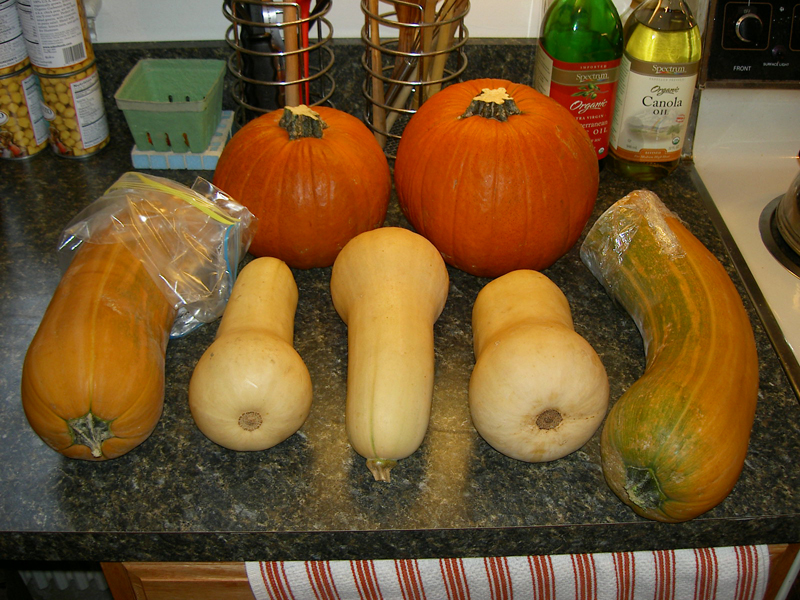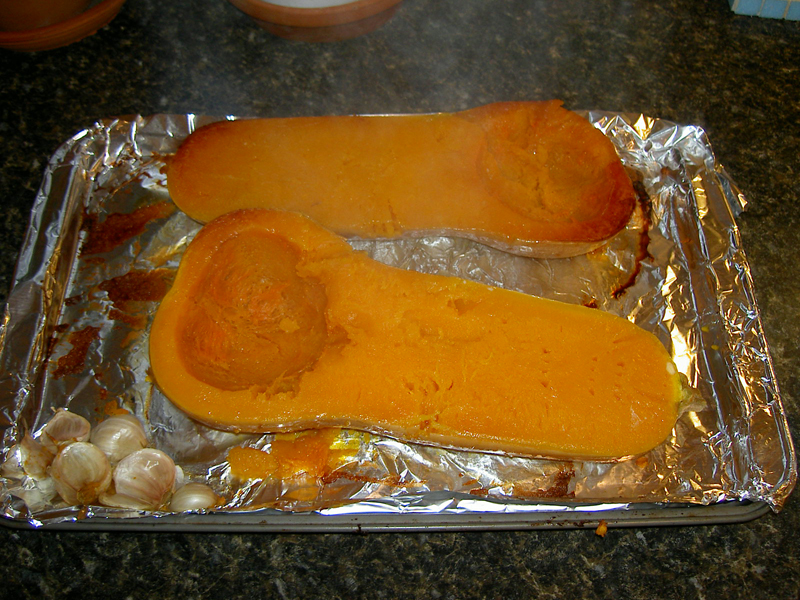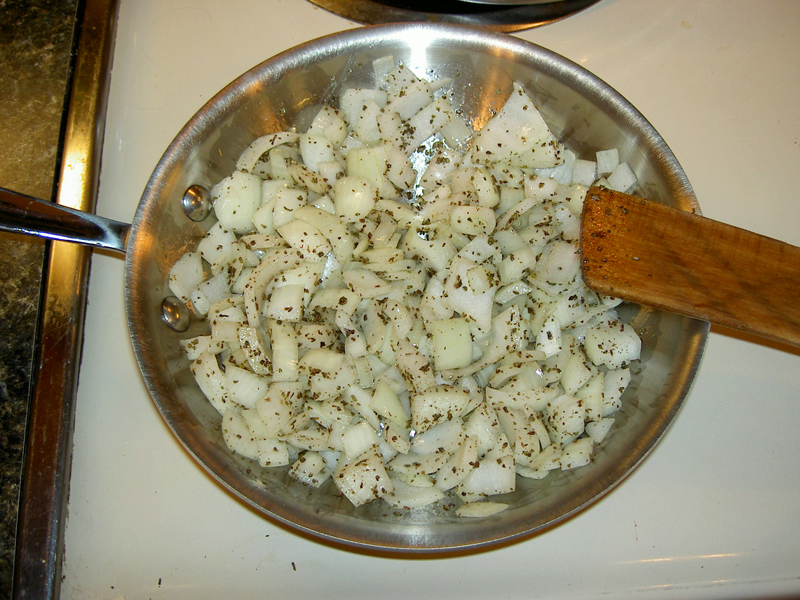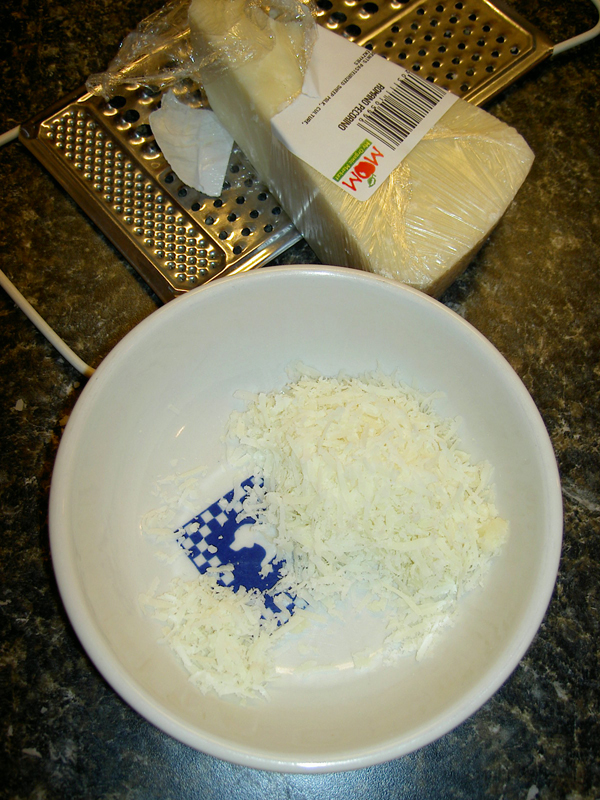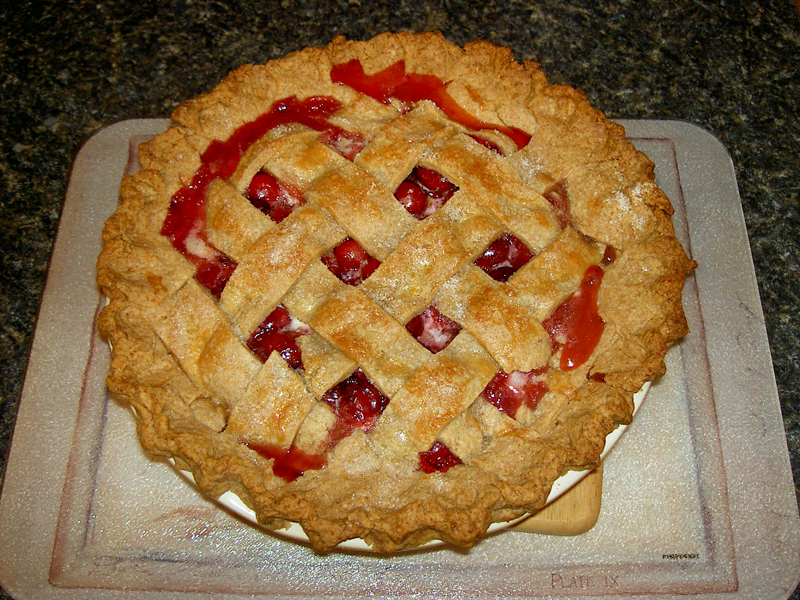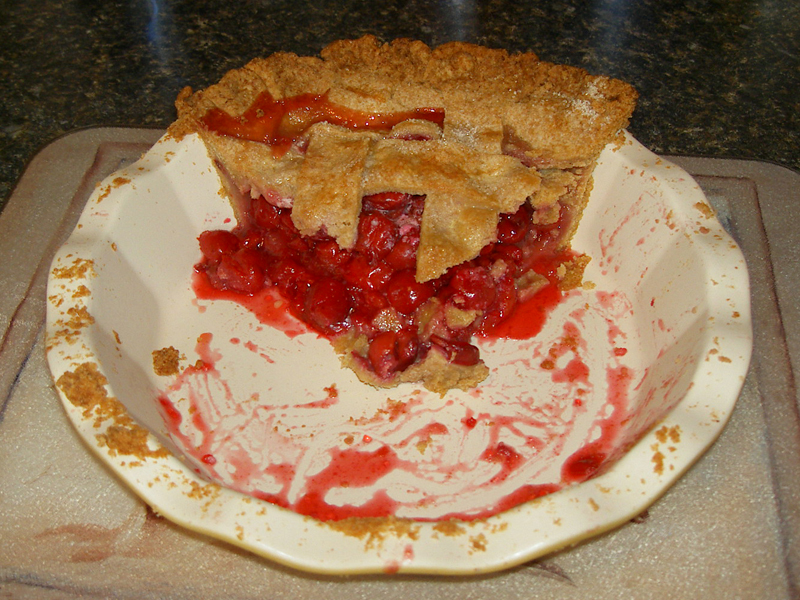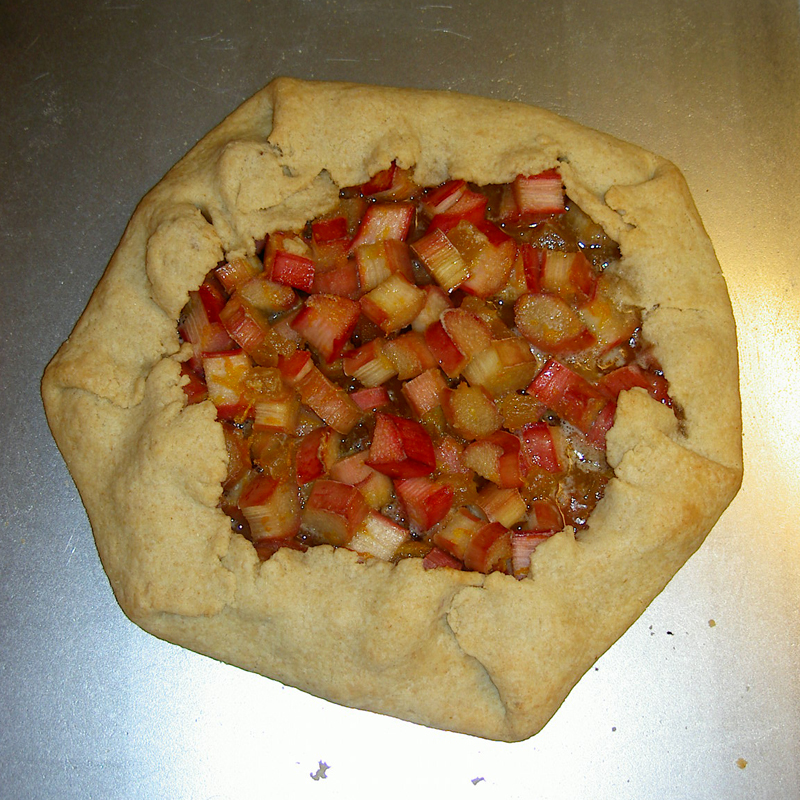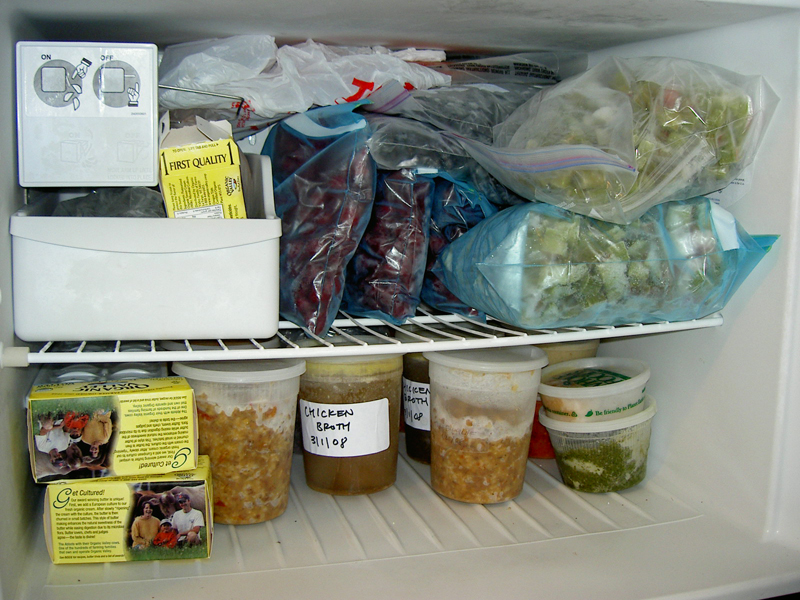
The freezer.
The major challenge I face with regard to processing and storing all the produce we receive with our farm share is the limited space in the freezer. We agreed to get a chest freezer this summer, but haven’t wanted to go ahead with that purchase until we get the basement repairs taken care of. Which leaves us with the fridge freezer, which is about half full of fruit from the summer (tart cherries, blueberries, and rhubarb) and 1/4 full of other prepared food (pesto, hummus, baba ghanouj, chicken stock, and tomato sauce). Which leaves about 1/4 of the freezer for regular things (butter, bread, coffee beans, salmon, and turkey burgers) and any additional prepared food I might try to fit in. You begin to see my problem, and this is after removing the bottle of gin with an inch at the bottom that my partner pointed out was occupying prime real estate in the door (‘Gin? What gin? I don’t have a bottle of gin in the freezer, what kind of alcoholic do you think I am, sheesh. Oh, that bottle of gin…’). I really should just drink that and be done with it.
One of the other containers taking up space in the freezer was a quart of cooked squash from last winter, most likely butternut. At any rate, 4 cups of squash. In order to make room in the freezer for the cooked pumpkin from this year that is destined to be pie in a few weeks, I thawed out the already-frozen squash and used it to make Winter Squash Bars:
Winter Squash Bars, from Simply in Season
(yields 24-32 bars)Beat together in a mixing bowl:
2 cups winter squash (cooked, pureed)
1 1/2 cups sugar
3/4 cup oil
4 eggs
1 tsp. vanilla
1/2 tsp. saltCombine separately and then mix into the wet ingredients:
1 cup white flour
1 cup whole wheat flour
2 tsp. baking powder
1 tsp. baking soda
1 tsp. ground cinnamonPour into lightly greased 11 x 17” jelly roll pan. Bake in preheated oven at 350F for 25-30 minutes.
As with just about every recipe I’ve made from Simply In Season, the bars were really good. In addition to using up squash, they use up eggs, 4 per batch (so if you also have more eggs than you know what to do with from, for example, your CSA, this recipe will help get rid of them). More like gingerbread than cookie bars, they were a hit with everyone: me, my partner, my friend from high school, her mother, my partner’s gaming guys. Four cups made two batches, about 5 dozen bars in all. While they still tasted good after being stored in tupperware overnight, the tops went from a nice bright orange to a bit brown; don’t be put off by that if it happens to you.
The next squash plan is soup, if I can (1) get some apples at the farmers’ market and (2) make some room in the freezer.
